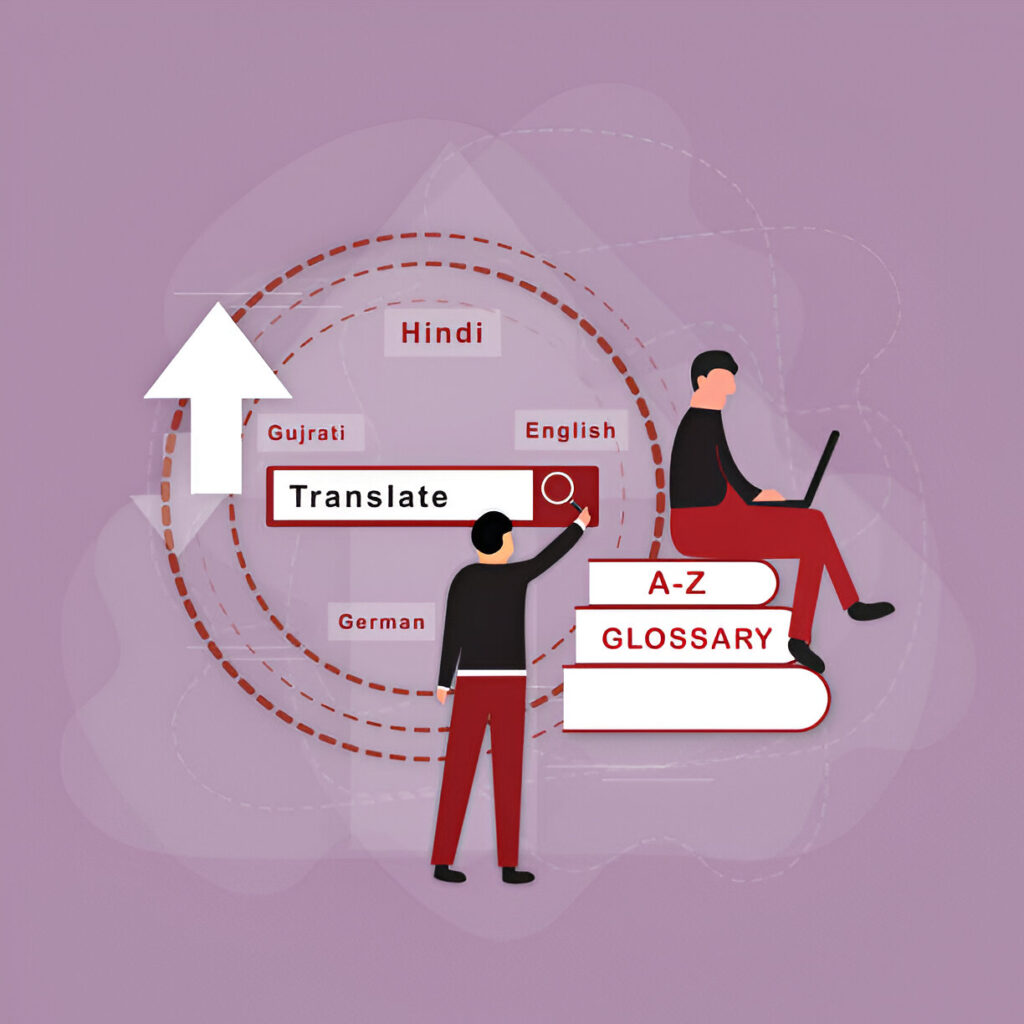Although the terms document translation and document localization may sound very similar, they are both different processes that aim to achieve different results. This article has, therefore, outlined the difference between translation and localization as the business goes global to ensure organizations understand how to tap into international markets effectively.
What is Document Translation?
Document translation is a process of translating text from a given language to another language whilst maintaining the sense of the document. The purpose is to facilitate other language speakers’ reading of content.
Some key points about document professional document translation by Rapid Translate:
- Focuses on language conversion from one tongue to another
- Retains the exact content and format of the original document
- Translates the words literally to convey the same message
- The resulting translation sounds foreignized to the target audience
- Usually, the first step before localization
Document translation services provide high-quality conversion of documents like:
- User manuals
- Marketing collateral
- Legal contracts
- Medical literature
- Website content
- Academic papers
Human translators should be professionals who can produce the best translation possible, which will not sound like a translation. When applied to the simplest items, such as official documents, machine translation makes sense; however, translations have to be checked by professionals.
What is Localization?
Localization means the translation of a document or the production of a product targeted at a particular geographical region. It is not language translation for transformation but cultural reinterpretation for adaptation.
Key points about localization services:
- Adapts to the culture and local preferences
- Involves extensive research into the target market
- Results in content that resonates better with native users
- It may require changes in visual design
- Includes translation but also further adaptation
Translation services make product-related materials such as software, videos, magazines, packages, and marketing materials much more relatable to the target culture. This results in a higher level of engagement with the users and improved conversion rates in each location.
Localization projects call for both human input and technologies, no matter how advanced they may seem.
Key Differences Between Translation and Localization
While translation is about converting a text from one language to another, localization is about bringing that text into a different cultural context.
Some key differences between document translation vs localization:
1. Scope
Translation may be the direct translation of words on the screen along with the transcribing of language, while localization refers to changing the content to reflect the cultural difference as well as the choice of designs to use.
2. Changes Required
Translation mirrors source text as is, while localization alters contents and includes or excludes details due to the target culture.
3. Target Audience
Anyone in the worldwide community of the target language is a translatable candidate. Localization centers on the users from a particular culture and geographical area.
4. Local Market Expertise
Technical translation can only be accomplished by a proficient translator. Localization requires a lot of work to be done regarding the knowledge of the local market.
5. Visual Changes
Translation does not usually change visual design. Localization often adapts visuals, colors and icons to suit the target culture.
6. Resulting User Experience
Translation enables basic understanding but can seem foreignized. Localization resonates better as culturally-adapted content.
7. Cost and Time Implications
Localization requires more effort and is, therefore, more expensive and time-intensive than translation.
8. Tools Required
Translation leverages linguist expertise and CAT tools. Localization uses both plus market research, visual design adaptation, testing tools and more.
Clearly, understanding these differences can help global organizations choose the right approach to reach users in each target market effectively.
When is Translation Sufficient?
For various types of content, straightforward document translation could be sufficient for global dissemination.
Some examples of when basic translation services may meet requirements:
Internal Communications
Translating internal communications like HR policies or company newsletters needs to focus on information accuracy over cultural resonance. Straight translation is often enough for global employees.
Academic or Technical Literature
Certain complex, technical documents authored by subject matter experts are fine with translation alone as they already target a global niche audience.
Multilingual Websites
Organizations on a budget often get their existing website content translated into different languages to manage a basic multilingual web presence.
Marketing Collateral
Early marketing material introducing a brand to a new market may rely on translation alone at first. Further collateral can get localized once market traction begins.
Legal Documents
Contracts, privacy policies and disclaimers often do not require full localization if legal requirements are met via translation alone.
When is Localization Essential?
For certain content types, localization is critical to achieving true market resonance and engagement in each locale.
Examples where full localization is a must:
Software Interfaces
All user-facing software interfaces and help guides need full localization so users can interact intuitively in their language.
Training Materials
Employee training material and e-learning modules must resonate locally with examples, imagery, and instructional designs that are adapted for each culture.
Video Games
Games with dialogues, fictional plots and visual elements require thorough localization to immerse and engage users emotionally.
Marketing Content
Blog posts, social media updates, whitepapers and other outbound marketing content require localization to convert foreign audiences. Tools like those offered by Globallinkweb.com can help you achieve this, ensuring your message resonates in any language. It’s very important because 76% of consumers say they would be more likely to buy a product with information in their native language.
Product Packaging
All consumer product packaging must get a localized makeover with localized branding, labeling, imagery and messaging to stand out on local shelves.
User Testing
Localized interfaces and content should get user testing with target groups to check cultural nuances and fine-tune them accordingly.
Clearly, full localization is an intensive endeavor that requires significant expertise, effort and budget. However, the high rewards of increased local adoption justify the investments in tailoring content for specific locales.
Choosing the Right Approach
Deciding whether basic translation or full localization is the right fit depends on:
- Content-Type: Technical documents may need only translation, while user-centric content requires localization.
- Target Users: Niche groups may comprehend translated content easily, while consumer audiences need cultural adaptation.
- Business Goals: Brand awareness needs translation initially, while revenue growth depends on localization.
- Time and Budget: Translation can work with quick turnarounds and small budgets, while localization needs sizeable investments for quality execution.
Here is a comparison chart of translation vs localization across key criteria:
| Criteria | Translation | Localization |
| Goal | Accuracy | Cultural resonance |
| Process | Language conversion | Cultural adaptation |
| Scope | Retain source format and content | Changes to suit the locale |
| Expertise | Linguists | Researchers, linguists, visual designers |
| Users | Global audiences | Local users |
| Metrics | Accuracy | Engagement, conversion |
| Timeline | Quick turnaround | Long-term project |
| Budget | Low | High |
Localization Maturity Model
As brand awareness and business grow in a foreign market, organizations often progress their approach from basic translation to full localization.
Lionbridge, a global localization solutions provider, suggests this localization maturity model for global organizations:
Level 1 – Basic Multilingual Presence – Start with an essential multilingual web presence by translating key pages and materials.
Level 2 – Expanded Multilingual Delivery – Expand language support across more touchpoints like social media, marketing, advertising and customer support.
Level 3 – Comprehensive Multilingual Alignment – Synchronize multilingual reach across all channels and locales for consistent messaging.
Level 4 – Total Market Orientation – Fully tailor branding, content, visuals, campaigns, products, apps and more specifically, for each locale.
This staged approach allows for managing investments and progressing localization gradually as resources permit.
Localization Success Stories
Many global brands have achieved remarkable success by prioritizing localization for foreign markets. Let’s see some case studies:
1. Netflix
Netflix localizes not just its multilingual interfaces but also curates locally relevant content for each major market’s unique tastes. This focus on localization has added 282 million international paid memberships to its growth.
2. McDonald’s
From localized burgers like McAloo Tikki in India to regional web interfaces like McChina, McDonald’s global expansion relies heavily on localization. Most of its outlets are now overseas, thanks to locally adapted menus and brand experiences.
3. LinkedIn
With localized interfaces in 26 languages, country-specific content sharing and regionally-targeted advertising, LinkedIn leverages localization to drive 75% of its sessions from international audiences.
These examples highlight that skimping on localization costs can adversely impact adoption and engagement in foreign markets. The key is to budget and plan for gradual localization aligned with business milestones.
Key Takeaways
- Translation involves linguistic conversion, while localization focuses on cultural adaptation
- Localization is more extensive and essential for user-facing products to resonate locally
- Straightforward translation works for some documents targeting niche global groups
- User-centric content and consumer products require full localization for adoption
- Localization needs significant expertise, effort and investment for quality execution
- Progressing from translation to deeper localization in tandem with market maturity enables success overseas
Understanding the differences between translation and localization allows organizations to allocate budgets and plan engagement strategies for entering or expanding reach in international markets.

